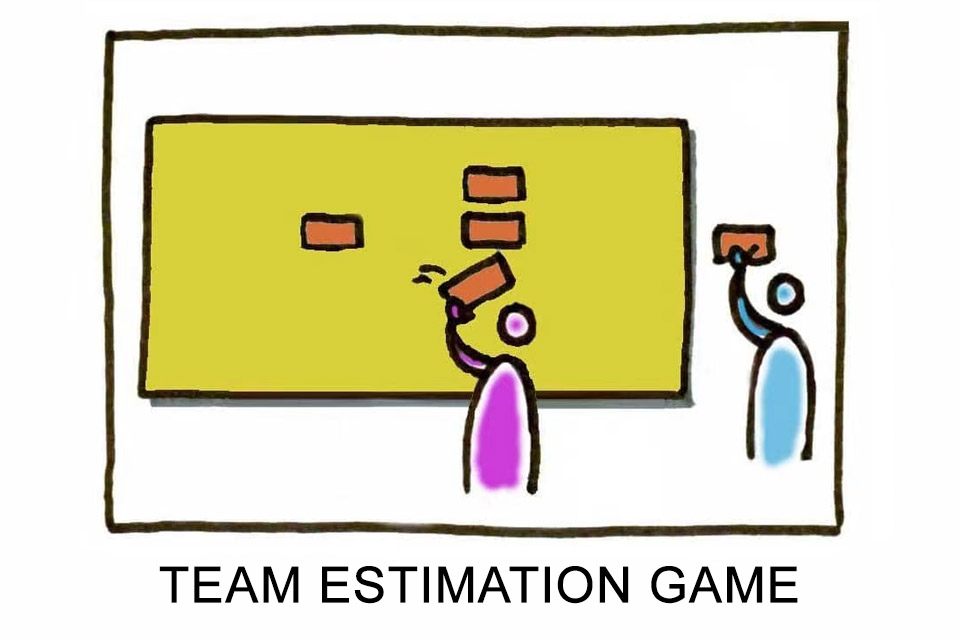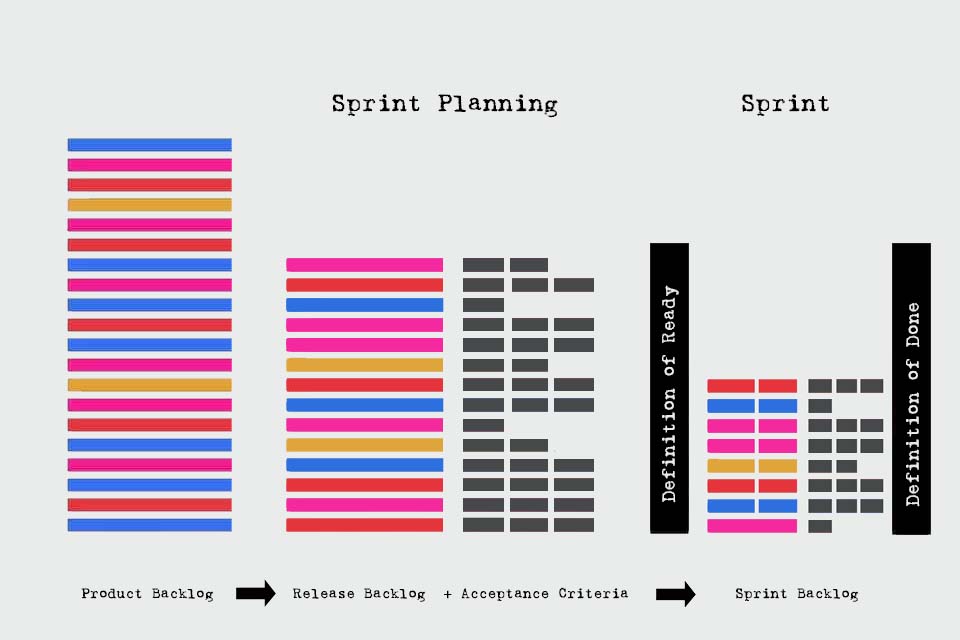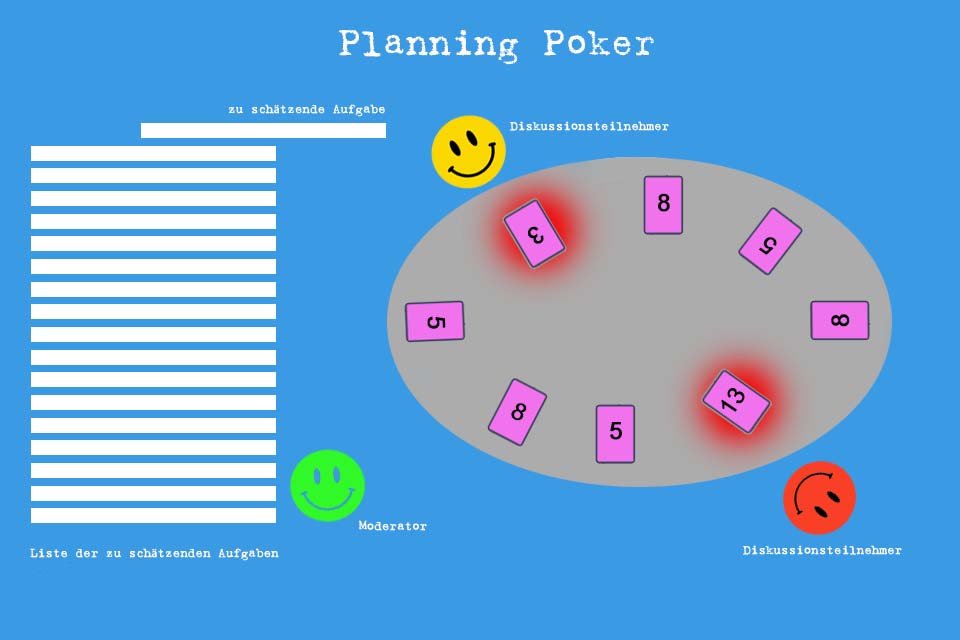What is the Team Estimation Game?
Team Estimation Game – the relative estimation of backlog items in the team
Effort estimation is an important task for organisations. The Team Estimation Game is an agile (Scrum) technique for estimating the effort of backlog items. It is done successively and relative to each other. Even if the name Team Estimation Game suggests that it could be a game of a group, in reality it is a very serious and efficient tool to determine the effort of backlog items compared to another. Like most rules in Scrum, the rules of estimation are playfully easy:
- The estimates are made by the developers. Product Owner and Scrum Master are not allowed to estimate. The Scrum Master could moderate the Estimation Game in his role.
- The user stories prepared in the backlog refinement (mostly by the product owner and/or the team), which are to be appreciated in the course of the Team Estimation Game, are written down on cards and stacked.
- The first card in the stack – the first user story – is attached by the first group member to a whiteboard, a blackboard or a wall.
- The second team member positions a second card relative to the first one:
If he thinks that the complexity of the user story is similar, he positions the second card next to the first one.
If he estimates the complexity of the user story to be higher, he positions the second card under the first.
If he estimates the complexity of the user story to be lower, the second card is positioned above the first.
(In some organisations, the maps are also positioned exactly the other way around; the only important thing here is a common understanding within the team.) - The third team member can now choose between two options:
He positions a third user story next to, below or above the other two cards based on his complexity assessment.
Or: he moves the second card because he estimates the complexity differently than the second team member.
When moving an already positioned card, it makes sense to mark this card for later discussions. In the course of the actual Team Estimation Game, a short explanation is sufficient as to why he has a different opinion, which should not, however, lead directly to a discussion. - The game continues until all cards in the stack have been valued relative to each other.
The relative results in the Team Estimation Game can then be used to estimate concrete story points, for example. For shifted or frequently shifted user stories, the definition of spike stories can be used for more detailed investigation.
Advantages of the Team Estimation Game
Basically the estimation in a team offers the following advantages:
- A common understanding of the relative effort and a good basis for a faster effort estimation.
- Less effort than with early decomposition of user stories into tasks.
- Intuitive set of rules and promotion of team collaboration.
Of course the participants of the Team Estimation Game should have an appropriate technical background. If this background is missing selectively, developers are allowed to skip single rounds. In some publications, the group size is mentioned as a point of criticism or possible limit; however, since Scrum defines a maximum size of 9 members (and one of them is usually also the Scrum Master), this criticism has only a limited effect.
Notes:
If you like the article or would like to discuss it, please feel free to share it in your network. And if you have any comments, please do not hesitate to send us a message.
The Scrum Guide does not mention the Team Estimation Game, but nonetheless it is very popular in many organisations.
In practice, it can be useful to combine the Team Estimation Game with the Concept of 3 Experts. This is an effort estimation method in which three experts independently estimate a process optimistically, realistically and pessimistically.
Here you will find additional information from our Smartpedia section:



